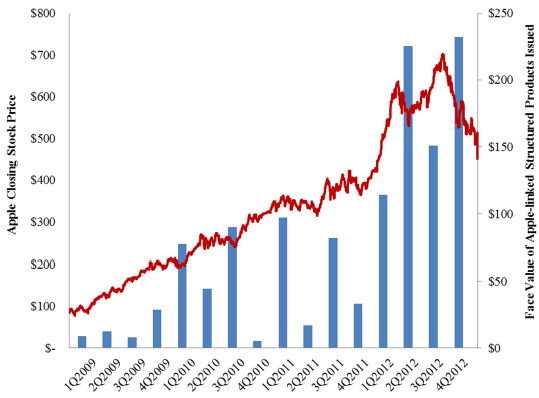
Our experts frequently write blog posts about the findings of the research we are conducting.
Goldman Sachs Uses JOBS Act to Sidestep Volcker Rule
By setting up an independent business development company in which it will hold a minority stake and limited leverage exposures, Goldman will be able to engage in at least limited...
Stockton California May Proceed with Chapter 9 Bankruptcy
Eaton Vance, Transparency, and Exchange-Traded Managed Funds (ETMFs)
JP Morgan's New Incarnation of Non-Agency RMBS Weakens Provisions from Pre-Crisis Version
Barclays' Structured Product Linked to a Basket of ETFs and Indexes
Apple's Declining Stock Price and Structured Products

What a CDO 'Resurgence' Might Mean for Investors
IBM Switches to Annual 401(k) Contributions
About 7 percent of employers offering 401(k)s make...
Attractive Yields and Hidden Risks
Dual Directional Structured Products are Risk.net's "Trade of the Month"